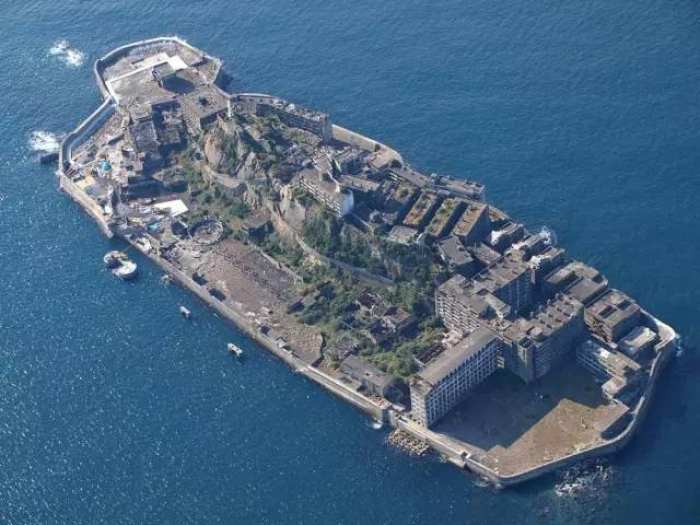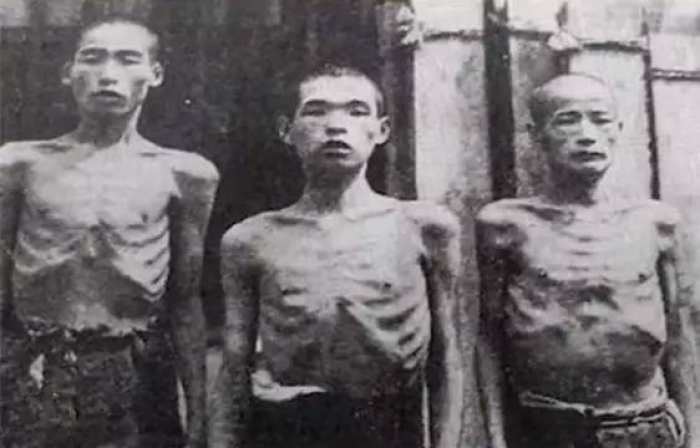


A video advertisement started looping on the big screen of Times Square, New York since July 3. Named “The Truth of Hashima Island” (also known as Battleship Island), the video reveals a rarely-known history of Japan during World War II.
Hashima Island, located 15 kilometers from Nagasaki, is reputed to be a tourism heaven on earth. However, it contains the graves of hundreds of Chinese.
A century ago, the Japanese discovered huge coal reserves in the seabed of waters around Hashima Island. The island was later acquired by Mitsubishi to exploit the resources.

Following the outbreak of World War II, a total of 41,000 Chinese labourers were forcefully shipped to Japan, 3,765 of who were sent to Hashima Island. They were forced to dig for coal on the island, undergoing humiliation and cruelty.
Fed with residues, the skinny Chinese labourers looked like living skeletons. However, they still had to work in the dark and hot undersea coal mine.
“If we failed to finish our daily tasks, we would be treated as slaves,” said Sun Zhongwu, one of the Chinese labourers who survived the ordeal. He was only 14 when he was sent to the island.
According to him, the island was fenced with high concrete walls like a giant prison. And indeed, it was a giant prison. Many of the labourers tried to escape, but only fell into the sea and drowned. Some of them even committed suicide because they could not stand the humiliation.

Chinese labourers
In fact, no one was able to escape the island alive.
By the end of World War II, a total of 722 Chinese and 1,442 Korean labourers had been tortured to death on the island. In 1970s, the Japanese government officially shut down the coal mine on the island after a worldwide campaign to replace coal with petroleum.
However, this was not the end of the story. In 2009, the island opened again as a tourist site, and the history about Chinese labourers was totally deleted from the introduction to the island.
Many tourists wrote in their daily journals that Hashima Island is like heaven on earth. In the eyes of Japanese people, the island is a source of pride for the country rather than shame or regret.
A Japanese tourist said most citizens see the island as a sign of Japan’s prosperity and legacy of modern industrial revolution.

Japan even applied to the United Nations Educational, Scientific and Cultural Organization (UNESCO) in 2006, hoping to get it list Hashima Island as a world heritage site. Unbelievably, UNESCO approved the application in 2015.
The decision was widely opposed in South Korea. A variety show in the country shot a program on the island to talk about the rarely-known history.
After a fundraising for 200 million won collected from South Koreans, the video advertisement was produced and entitled, “The Truth of Hashima Island.”
Sun said Japan’s application to UNESCO once again reminded him of his ordeal, those painful moments when he and colleagues underwent torture in the hands of Japanese.
“Will the Japanese ever admit their crime and acknowledge the trauma that we suffer?” Sun asked.

 Award-winning photos show poverty reduction achievements in NE China's Jilin province
Award-winning photos show poverty reduction achievements in NE China's Jilin province People dance to greet advent of New Year in Ameiqituo Town, Guizhou
People dance to greet advent of New Year in Ameiqituo Town, Guizhou Fire brigade in Shanghai holds group wedding
Fire brigade in Shanghai holds group wedding Tourists enjoy ice sculptures in Datan Town, north China
Tourists enjoy ice sculptures in Datan Town, north China Sunset scenery of Dayan Pagoda in Xi'an
Sunset scenery of Dayan Pagoda in Xi'an Tourists have fun at scenic spot in Nanlong Town, NW China
Tourists have fun at scenic spot in Nanlong Town, NW China Harbin attracts tourists by making best use of ice in winter
Harbin attracts tourists by making best use of ice in winter In pics: FIS Alpine Ski Women's World Cup Slalom
In pics: FIS Alpine Ski Women's World Cup Slalom Black-necked cranes rest at reservoir in Lhunzhub County, Lhasa
Black-necked cranes rest at reservoir in Lhunzhub County, Lhasa China's FAST telescope will be available to foreign scientists in April
China's FAST telescope will be available to foreign scientists in April